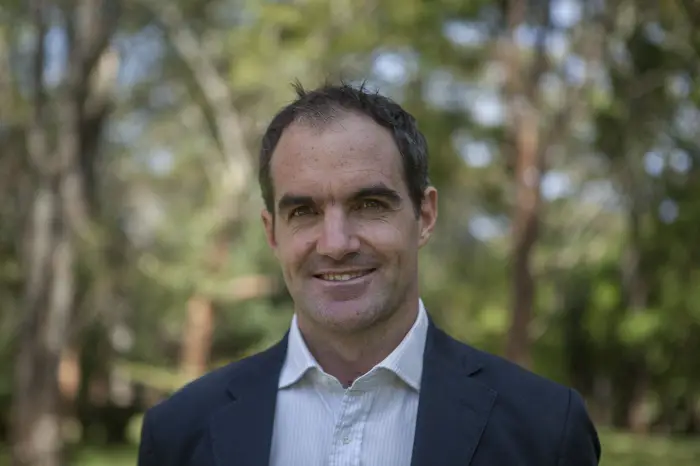Solar energy projects are springing up in every corner of the globe, and it’s no surprise as this renewable power technology has proven itself at all scales. From powering individual homes to utility-scale solar parks with thousands of panels, solar generates electricity in a wide variety of applications.
Also read: Solarcentury partners with the EU and UNDP in powering remote communities in Eritrea
This technology continues to prove its cost effectiveness for businesses, in particular as a cheaper, cleaner option to polluting diesel. A great example is Williamson Tea’s solar PV system which provides approximately 30% of the factory’s electricity needs. When the national grid is working, the solar power system works in parallel with the grid and reduces the amount of grid electricity used.
When the grid is down, the solar power system works together with the backup diesel generators, significantly reducing the amount of diesel consumed. Even the largest oil companies grudgingly agree that power captured from the sun is the world’s fastest growing source of energy.
According to the recent Renewables Global Status Report (REN21), at least 75 GW of solar PV capacity was added worldwide in 2016 which is equivalent to 31,000 solar panels every hour.
Also read:Pros and Cons of installing solar panels in your home
Solar accessibility
As solar proliferates, more and more people are now waking up to the power of the sun in order to generate electricity independently. Especially for off-grid systems, solar is democratising energy and making energy more accessible for all: solar is literally giving power to the people! In East Africa, rows of solar panels mounted on the ground, on roof spaces and even on carports, are helping to reduce reliance on energy from the grid.
These commercial scale systems reduce energy costs in the manufacturing, mining and retail sectors. Consuming solar electricity during the day means less energy is used from the grid, and the resulting lower operating costs ensure greater savings and greater competitiveness for the customer.
Also read: Zimbabwe’s business trails as homes turn to solar power
Power-hungry East Africa
East Africa needs power, and to be specific, it needs more consistent, reliable sources of power. Relying on diesel generators is financially and environmentally unsustainable, even in those circumstances where they are only used for backup.
Bright sun and falling solar prices has made solar competitive with the grid, meaning that solar is a key technological ally for governments wanting lower cost power supplies for their citizens and businesses. Throughout East Africa, national power infrastructure needs massive investment to turn it into a modern reliable network, capable of supplying enough power to meet demand.
Inevitably this also means that new sources of supply need to be found. The engineering challenge is on a continental scale and it is clear East Africa needs new power solutions, and fast. With solar, those solutions are here already. Companies no longer have to wait for upgrades to the electricity system to provide more reliable power.
Businesses are purchasing solar panels and combining them with energy storage to provide more reliable, more locally sourced and lower cost power than an intermittent grid or a diesel generator can provide.
Also read: Solar Power ends water woes in Malawian district
Businesses are also waking up to the possibilities afforded by a decentralised energy network, with solar and wind systems feeding clean energy into the grid, these technologies often complimenting each other. Pioneering businesses recognise that this approach allows for far more flexibility in the grid than relying on a handful of centrally located large power plants.
Aside from the need for consistent power, countries are of course looking to move away from fossil fuels because of the negative impacts of carbon on the environment and the ravages of unchecked climate change. Factories and cars belching out fumes also pose a huge air quality risk, as well as being major contributors to our changing climate.
This spurred virtually every country in the World to sign up to the Paris Climate Agreement in December 2015. Governments committed to replace fossil fuels almost entirely by clean energy in the second half of this century. East Africa can set an example to the world in how development can be accelerated using cheap renewable energy to support business, a win-win for both the climate and our economy.
Innovations in solar technology are advancing rapidly, with solar integrated in the built environment in a variety of ways. The solar carport on the roof of Nairobi’s Garden City Mall built by Solarcentury, which was connected in September 2015, is an early example of what is possible in our urban centres. As well as providing shade for car parking spaces, the system enables the Mall to be powered completely by solar electricity during daylight hours.
Solar uptake is increasing across East Africa but in truth the huge potential of the technology in our region remains largely untapped. There is no question that solar is already delivering, from small domestic systems on roofs powering homes, to much larger multi-megawatt systems on the ground or on factory roofs supplying solar energy to businesses.
These early examples of what is possible should point the way forwards for policy makers and businesses in Kenya and throughout the region, to ensure a more diversified, reliable, cost-effective and robust energy mix fit for the 21st century.

